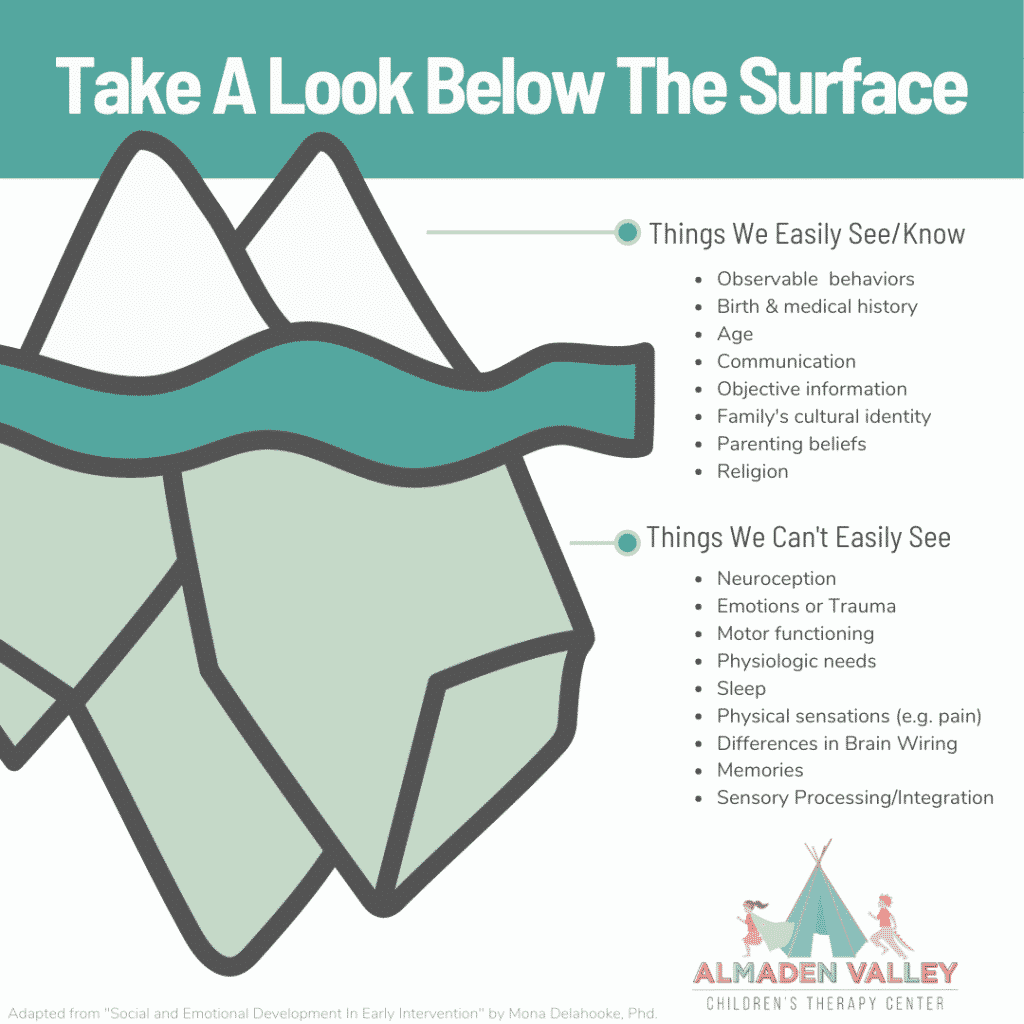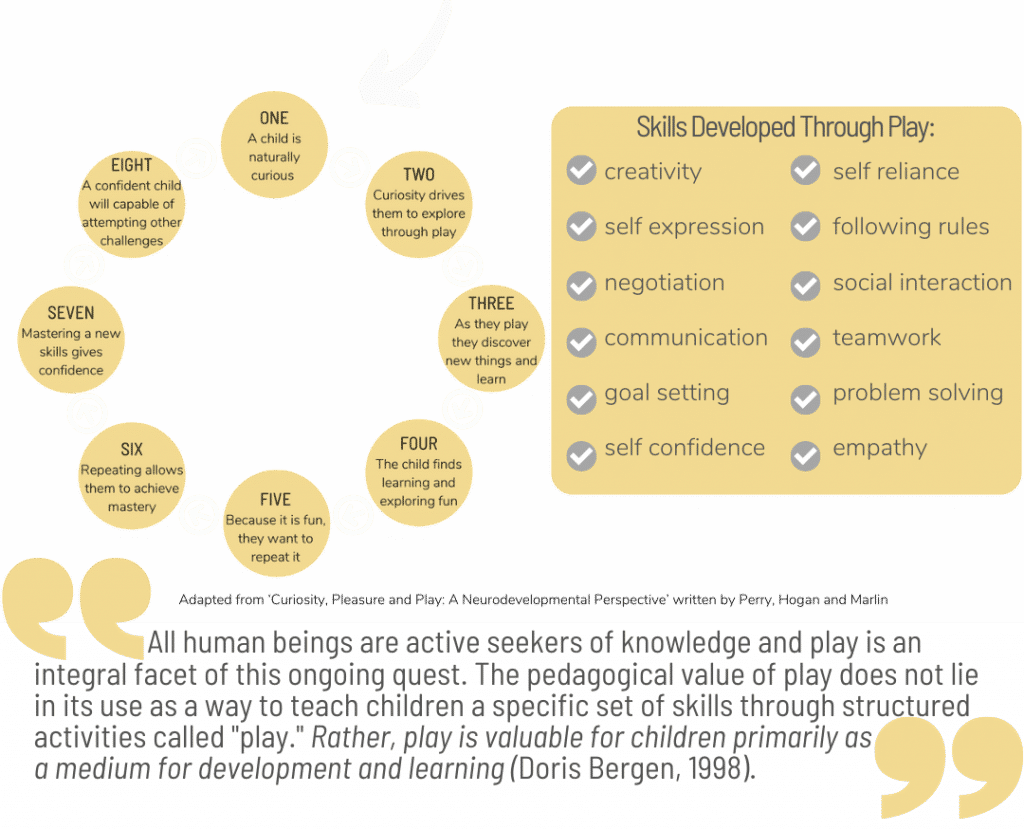
Behavioral Change Requires Relational Security
At AVCTC we believe that children’s behaviors are their best available way to communicate their state of regulation and/or current abilities. We have tossed aside the common notion that children primarily use behavior either to get something or to get out of something. The scientific community is now recognizing that there is a lot more to a child’s behavior than meets the eye. Neuroscientists, Dr. Stephen Porges developed the Polyvagal Theory which shows that we have an innate drive to avoid threat and secure safety and this guides human behavior. This is true for all people, not just children. Dr. Mona Delahooke summarizes, “what we often label as ‘bad’ behaviors are actually fight-or-flight behaviors, adaptations of the ANS [autonomic nervous system], developed to protect human beings from perceived harm.” This understanding has transformed how we work with children. It is our belief that a child’s behavior is a protective response from their brain to keep them safe. We look at behaviors as clues and try to determine what information they may be trying to tell us, which allows us to view the child not as willfully manipulative but in need to of support to feel safe. This allows us to look below the surface of what might be causing the behaviors. In other words, we can go beyond the “what” (e.g. child refuses to sit at the dinner table with family) to the “why” (e.g. child is severely sensitive to tactile input resulting in a sense of threat and lack of safety). Imagine how we might respond to a child differently with that shift in paradigms. If we believe the problem is “the child won’t come to the table” rather than “the child’s body feels unsafe” it is very likely we will approach the situation in a way that does not provide the child with what they need most to be successful: safety!

Play is a Child’s Primary Occupation
When I meet someone new and tell them I am an occupational therapist and that I work with kids, it never fails, I get some funny looks and responses…
“No, I do not help kids find jobs or work on their resumes.”
In the field of occupational therapy, the term “occupation” refers to meaningful activities that we need and want to do. Childhood occupations include learning, playing, navigating their environment through movement, eating, sleeping, and more. According to the American Occupational Therapy Association, “It is often through play that children learn to make sense of the world around them. It is a child’s ‘job’ or ‘occupation’ to play to develop physical coordination, emotional maturity, social skills to interact with other children, and self-confidence to try new experiences and explore new environments.” At AVCTC we believe that children learn, grow and develop through play and as such it is our primary means of working with children. It is important to note that our play is very purposeful and intentional. At all times during our “play”ful interaction with a child, there is a reason we are doing what we are doing. Sometimes it’s to build rapport, sometimes it’s to build a skill, sometimes it is to regulate their nervous system and sometimes it’s to build motivation.
In order to understand the value of play, consider the process a child goes through when engaging in play:

Optimal Development Requires a Solid Foundation

Development occurs in a “bottom up” fashion meaning that before we are able to master complex, higher level skills (e.g. academic learning), we must have a strong foundation in place. The Learning Pyramid was developed in 1991 by Taylor and Trott and it depicts the way in which children develop and learn new skills. All learning is dependent on having a foundation of the prior necessary skills. At the bottom/foundation of the pyramid you will find the sensory systems. For a child with challenges related to sensory development, they will likely have difficulty mastering the skills above, (learning).
We believe that in order to support children challenges, we must approach the difficulty from the root of the problem or the foundation. For example, if a child is struggling with handwriting we will work to develop the missing skills at the foundational levels rather than only practicing handwriting. We are targeting the “why”, the underlying challenge, the reason they are struggling with writing. This doesn’t mean we are going to forget about their difficulties with writing. We may suggest strategies (such as modified paper, pencil grip, practicing writing), which we like to think of as “bandaid” approaches, that will help in the mean time while we actually help heal or address the “injury” (the underlying challenge). Both approaches are important and necessary.
A newer take on the learning pyramid was developed by Dr. Lucy Jane Miller in 2011. She flipped the pyramid showing just how delicate of a balance it is and how if one aspect is not in place, the whole thing can easily tip over. In other words, if a child is missing a skill at their foundation, it is likely many areas will feel difficult and unstable. The other aspect of her revised approach that we appreciate is that at the base of the pyramid she has “relationship and engagement”. Children benefit from having a strong support system in order to thrive.


References


If this sounds like a good fit for your family, we would love to connect. Here are ways you can stay connected:







